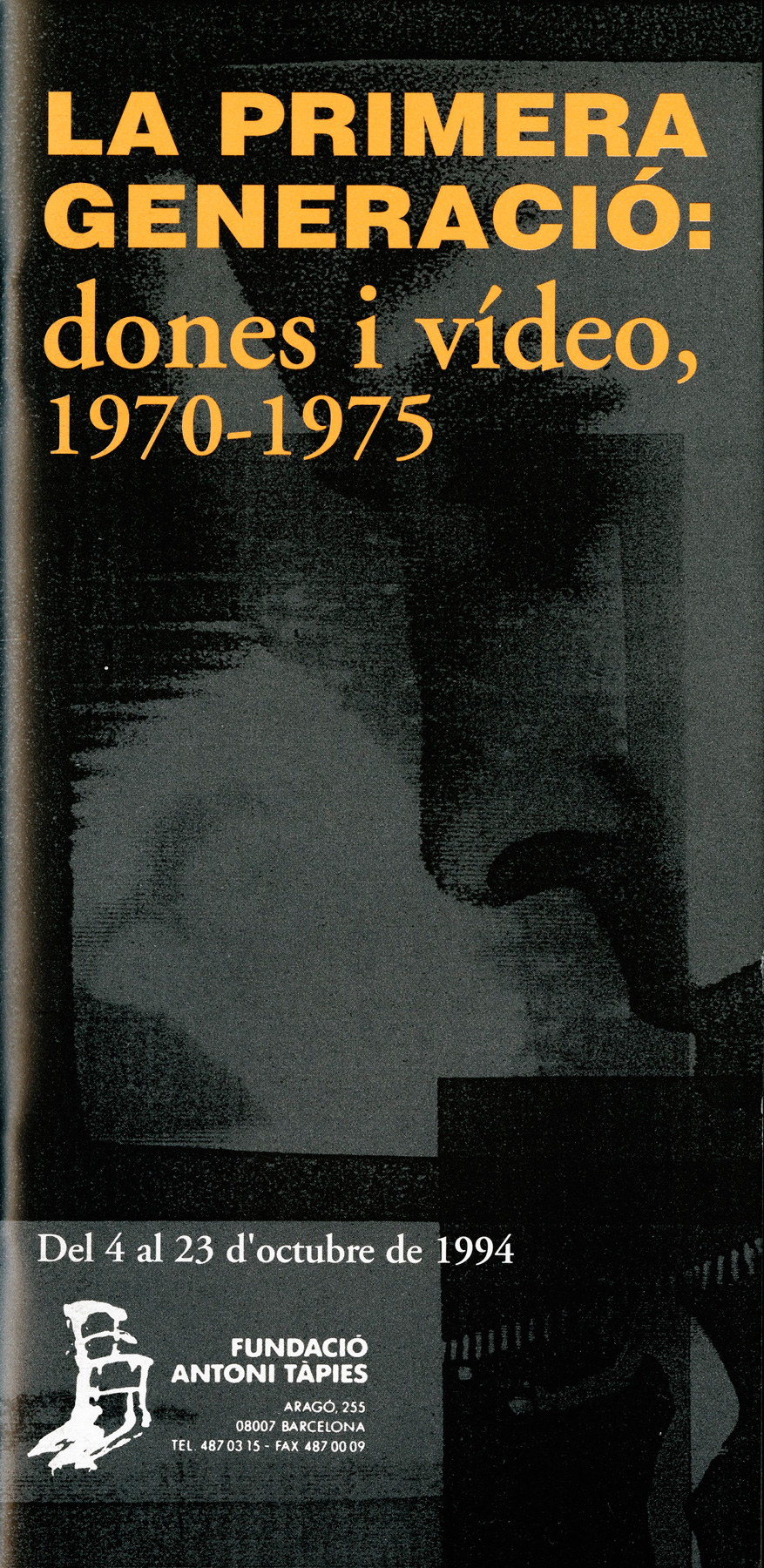Home
›
Public programmes
› Activities
›
The First Generation: Women and Video, 1970-1975
Activities
›
The First Generation: Women and Video, 1970-1975
The First Generation: Women and Video, 1970-1975
The first generation: women and video, 1970-1975 presented a history of the origins and evolution of video, and brought out the important role of women in creating and defining it. The exhibition contained 35 videos whose running times varied between 30 seconds and an hour done by 21 of the leading video artists in America, Europe and Japan.

The show, which runned for a total of ten hours, was introduced by short interviews with the authors and includes a number of pieces that had not been viewed since the early seventies.
When, in the late sixties, video came onto the scene, the art world, and the world in general, was in a state of effervescence. Process Art, Earth Art, happenings, performance and Conceptual Art questioned the hegemony of modernity within the art world, while feminism, student revolts, the sexual revolution and the civil rights movement attacked the political status quo. Women gradually raised their voices and artists began to create and demand an image of women that challenged traditional stereotypes.
Unlike painting and sculpture – with a male dominated tradition behind them – video offered women artists, perhaps for the first time, an opportunity to work on equal terms with their male colleagues. Free to use the medium in whatever way attracted them most, women all round the world from a wide range of artistic disciplines (painting, sculpture, cinema, music, theatre and dance) came together in a similar use of video to investigate personal and political issues concerned with the female condition and sexuality. They brought content and subjectivity and ventured beyond the concern with material and form that characterised modernity and clothed their work in personal history and social and cultural criticism.
So when they turned the video camera on themselves and their everyday life, and when they presented the world from a particular viewpoint, women began to control their own image. In that process they redefined reality through a reaffirmation of the validity of women’s experiences. Moreover they transformed the predominantly male monoliths of Minimalism into “the disordered, informal, sometimes chaotic objects of post-Minimalism.” Thus they opened the way for a large part of the video production of the eighties and nineties.
Dates
From 04.10.1994 to 23.10.1994
With:
Shirley Clarke, Hermine Freed, Eleanor Antin, Beryl Korot, Martha Rosler, Ilene Segalove, Julie Gustafson, Valie Export, Lynda Benglis, Anna Bella Geiger, Mary Lucier, Doris Chase, Shigeko Kubota, Barbara Buckner, Lisa Steele, Mako Idemitsu, Steina, Joan Jonas, Nancy Holt, Kyoko Michishita, Ulrike Rosenbach
Curator:
JoAnn Hanley







